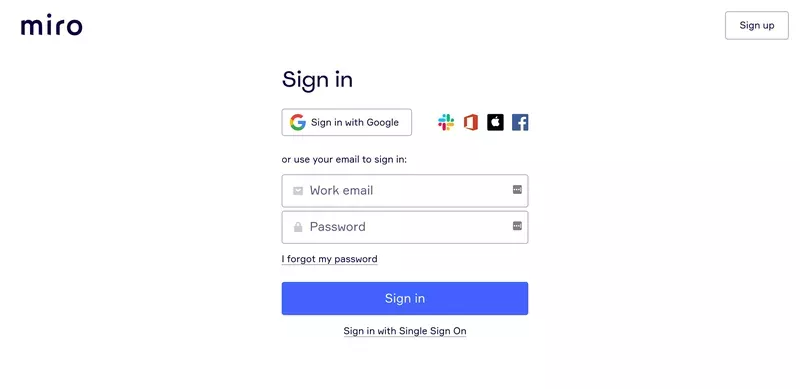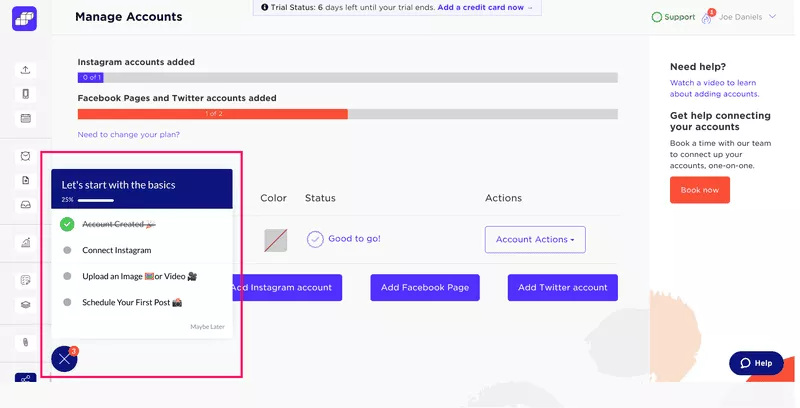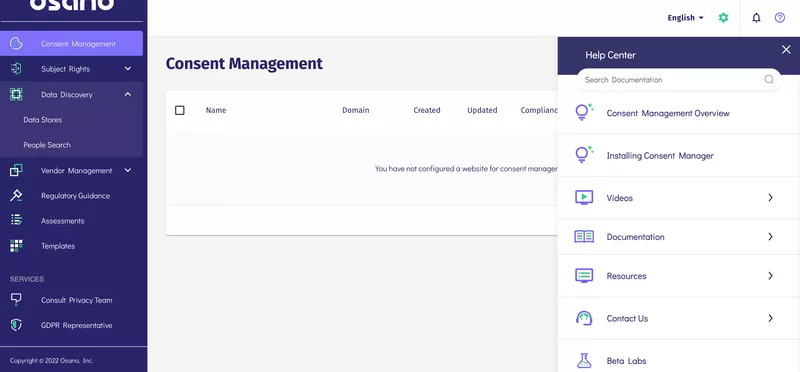
The 6 Stages of The Product Adoption Process: Driving SaaS Users To Adopt Your Product
Get The Insights!
The fastest way to learn about Product Growth, Management & Trends.
What is a product adoption process?
Many SaaS businesses confuse adoption with user acquisition. That can be a fatal mistake.
In this blog, we’ll explain why, and how you can get more of your users to adopt your product – becoming long-term, stable, and profitable customers.
What is a product adoption process?
A product adoption process is a system or strategy you use for helping people go from total unawareness of your product to deciding that it works well for them.
That customer journey naturally breaks down into a series of stages, where the users’ needs and how you should meet them are different.
In the early stages, you must make potential customers aware of your product, what it does, and why they should be interested in using it, helping them move from the introduction stage to the consideration stage.
Later on, they’re more concerned about how to make the most of your functionality and how much it will cost.
Why is the product adoption process important?
The product adoption process matters because maximizing product adoption drives customer retention, revenue, and growth for SaaS businesses.
Most SaaS products are paid for on a subscription basis. If a subscription product doesn’t regularly deliver value, customers will churn.
Therefore, getting users to adopt your product by helping them realize sustained value is critical to maintaining and growing your business.
Not only that:
- Acquiring new customers is between 5 and 25 times more expensive than keeping current ones.
- Research shows that increasing customer retention rates by 5% increases profits by 25% to 95%.
- Adopted customers are ideal targets for product expansion strategies, increasing your revenue through upselling.
What is the product adoption curve?
The new product adoption process is not linear. As your product matures, you’ll be faced with different customer segments. Each demands its own adoption process.

This “innovation adoption lifecycle” or “product adoption curve” is broken down into five product adoption stages:
Stage 1: Innovators
Innovators (2.5% of the market) are excited about any new features and products. They love trying them out and don’t tend to mind a few bugs. They’re a great feedback resource, but their love of novelty makes them hard to pin down long-term.
Stage 2: Early Adopters
This segment (13.5%) wants innovation rather than novelty. Early Adopters expect a product to work well, and support when they encounter problems.
Stage 3: Early Majority
This 34% segment wants a proven product – they are not risk-takers. Build strong bonds with Innovators and Early Adopters to give the Early Majority confidence. Once they’re on board, their risk aversion will make them loyal customers.
Stage 4: Late Majority
The Late Majority (34%) is similar to the Early Majority, but they’re more risk-averse, more cautious, and less tolerant of glitches.
Stage 5: Laggards
These people in the final stage (16%) don’t want to change unless they simply have to.
What are the six stages of the product adoption process?
Most people split the product adoption process into five stages. We think this misses out on a critical stage of customer lifetime: product activation.
So – whichever segments from the adoption curve you are currently dealing with – we split the ideal new product adoption process into these six stages.

Each of these stages plays a unique and equally important role in the overall consumer adoption process. They also help to inform decision-making in the strategies used for adoption process marketing.
Stage 1: The product awareness stage
Becoming aware that a product exists and what it does is the first stage in the new product adoption process.
A familiar brand provides an advantage for new products in generating awareness among the target audience.
Marketing campaigns need to create awareness of the product as a solution to a well-known problem (differentiating it from alternatives) or awareness of a less well-recognized problem and the solution together.
Stage 2: The product interest stage
A potential customer moves from awareness to the product interest stage when the information about the product is of interest to them and their job to be done (aka what they are trying to solve with your product).
The information they want depends on which product adoption group they are from.
It also depends on their intended use cases – along with details like features, price, and customer support.
Stage 3: The product evaluation stage
The product evaluation stage sees a sharpening of focus from the previous stage.
The customer considers the pros and cons of giving your product and others a try.
During this phase, your efforts should focus on communicating the best use cases, highlighting your strongest features, and the relative advantage over competitors, and minimizing the perceived costs of testing your product.
Stage 4: The product trial (sampling) stage
By now the prospect has decided they’re going to try your product out.
This might be a free trial (reducing the perceived cost mentioned above), free samples, a product demo, or an initial purchase.
During the product trial stage, users test your service against their specific needs.
They see if it delivers on its value proposition; if it fits in with their tech stack; how much effort it requires; etc.
Stage 5: The product activation stage
The product activation stage is the step we’ve added to the typical five-stage breakdown.
The jump from agreeing to test a product out to committing to it long-term is too great to treat as one step. Pushing for widespread adoption directly at this step in the customer journey is premature. It’s only when you know that a user has activated – experienced value for the first time – that they can be convinced to stay.
So, you should include an activation stage, focused on making sure that your newly-acquired customers get that benefit fast.
Stage 6: The product adoption stage
Activated users are now primed to be convinced that the product is right for them.
In this last stage, product teams must convince users that they’ll get enough value regularly to justify paying for the product, learning how to use it, and foregoing whatever the competition offers.
For SaaS products with free trials, consumer adoption is best indicated by users deciding to start paying. For others, it’s when users renew.

Improve the product adoption process with Userpilot!

What influences the adoption process
The factors that affect the product adoption process can be split into two types: push versus inertia and pull versus anxieties.

Dissatisfaction with the old solution (or lack thereof) provides a push to change. But that’s challenged by inertia – the power exerted by the status quo.
The appeal of your new solution provides a pull force for change. In turn, anxieties about whether your product is as good as it seems to provide an opposed anti-change force.
These forces often appear in combination. For example:
- Ease of use: If your product is easier to use than alternatives, it can exert a pull force and reduce inertia (it’s less effort to learn to use, a shorter time to value).
- Product visibility: You can increase product adoption by making your product more visible – not only as a better solution than alternatives (pull) but also by making people aware of a problem they didn’t realize they had (push).
- Pricing: Your pricing affects consumer adoption. If it’s wrong, it’ll increase inertia and anxieties; if it’s right, it’ll reduce them and generate pull.
- Product quality: The ultimate test is whether a product solves a real problem well, relative to alternatives. The better your product is, the more the advantages will outweigh the concerns.
Main metrics to measure product adoption
What “counts” as product adoption will be specific to your product, but there are some important common metrics:
- Time To First Value (TTFV): How quickly users go from starting a trial to activation.
- Product Qualified Leads (PQLs): Users who have activated, are ready to adopt, and just need nudging over the edge.
- Daily active users: The total number of unique users who engage with your product on a daily basis.
- Customer Lifetime Value (CLV): The more users adopt, the less churn. That means more revenue per customer over time or higher CLV.
- Product Activation Rate (PAR): If PQLs is the number of activated users, PAR is the percentage of new users reaching that point. A high PQL with a low PAR suggests you’re churning too many sign-ups.
- Feature Adoption Rate: The use of multiple features is a good proxy for users getting value. Efforts to drive feature adoption lead to more users activating and adopting the product.
- NPS and CSAT: Collected with customer feedback, these metrics indicate how satisfied existing customers are with your product and how willing they are to share your product with potential users.
- Customer Engagement Score: This is a more complex, customized metric that ascribes values to actions or events that indicate users are becoming more engaged and seeing more value (eg referring a colleague, completing a task, filling out their profile, etc).
How to improve product adoption
We’ve already looked at many of the factors that influence consumer adoption.
In this final section, we’ll apply them as strategies that drive product adoption – particularly through the product trial, activation, and adoption stages.
Make it easy for users to trial your product with a frictionless signup flow
A clunky signup flow can be a barrier to converting evaluations into trials.
If you ask for too much information, make it difficult to see what people have to do, or your signup flow is buggy, many will give up.
Miro’s signup flow is brilliant in this respect. Miro is an example of a company expanding its SSO options and helping users save login time. They make sure every SSO option provided is relevant to their users; in this case, Slack or Apple.

Personalize the onboarding flow based on each user’s needs
Why do so many SaaS companies feature a welcome screen?
Not to welcome new customers, but to segment them – to provide more personalized user onboarding and drive customer success.
With a few simple questions, Kontentino segments new trials by company type and use case.

Once Kontentino collects this data, it can provide onboarding that gets these different user types to their activation points fast.
These questions can take any form and segment users in many different ways.
In Userpilot, for example, you have a vast number of variables you can trigger experiences by.

Benefit from Userpilot’s advanced segmentation options!

Use in-app checklists to drive users to the activation point
Users like to know how much effort they have to commit to completing a task. If they don’t know how close to finishing they are, they often give up.
A checklist guiding users to the activation point shows them their progress – and makes clear what they have to do to realize value.

The steps shown here are those necessary for users to feel the value of their social media scheduling service.
By communicating the route to the product value more clearly, Sked Social drives more users to reach the product activation stage – increasing the likelihood of adoption.
Create onboarding checklists code-free with Userpilot!

Guide users with interactive walkthroughs
For products with steeper learning curves, product adoption can be accelerated by taking users step-by-step through the actions they need to complete.
An interactive walkthrough goes one step further than the checklist example, in providing a sequence of native tooltips that take a user through using a specific feature, for the first time.

Tooltips invite new users to complete each of the actions required to set up a bespoke chatbot.
If a user follows all the instructions, by the end of the walkthrough, they will have a basic chatbot – demonstrating Kommunicate’s value and hopefully leading them to activate.
Use this alongside a checklist to show users how far through the process.
Build interactive walkthroughs with Userpilot!

Offer in-app self-service support to improve the user experience
Finally, be prepared to offer help when and where users need it, with contextual self-serve support.
An in-app help center is a one-stop shop for documentation, videos, short demo videos, your chat widget, and other resources.

What all these tactics have in common is removing the friction that stops users from effortlessly adopting your product as the best way to solve their problems.
Conclusion
Having a well-defined plan for driving users through your product adoption process can make a huge difference in customer retention, growth, and churn.
There are many ways you can help users fulfill the needs they display during each stage – and we’ve looked at just some of the most effective here.
Remember that effective onboarding is one of the most powerful tools at your disposal for driving activation and ultimately adoption.
If you want to get started building amazing onboarding experiences and improving your adoption and conversion rate. Get a Userpilot Demo today.
Drive product adoption with Userpilot!








